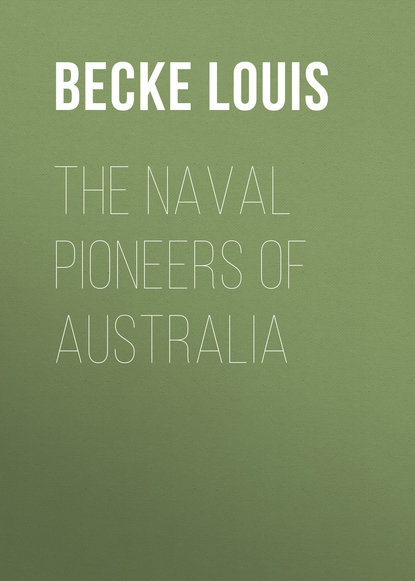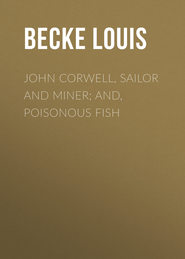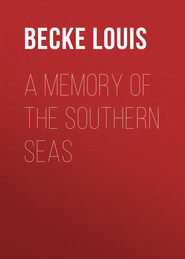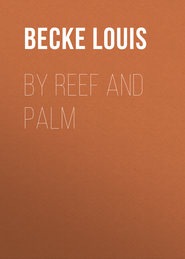По всем вопросам обращайтесь на: info@litportal.ru
(©) 2003-2024.
✖
The Naval Pioneers of Australia
Настройки чтения
Размер шрифта
Высота строк
Поля
His knowledge of navigation and his good conduct led to such recognition that when he was under thirty he was appointed master of the Mercury. His surveying work on the St. Lawrence at the siege of Quebec was so carried out that the Admiralty saw in him one of the most promising officers in the service; and Sir Hugh Palliser, one of the first men to "discover" Cook, was from this time, his best friend, giving him, in 1764, an appointment as marine surveyor of Newfoundland, where Palliser was governor. Cook was then a good seaman and a clever navigator, but there is no doubt his special talents were by this particular service afforded an opportunity for full development, and so he became the best scientific man in the navy. In 1769 it was determined to send an expedition to the Pacific to observe the transit of Venus. Cook had just returned from Newfoundland, and he was appointed to the command.
Seventy years had elapsed since Dampier's voyage in the Roebuck. Meanwhile what had the English done in the way of South Sea exploration? What was the navy like at this time, a year before Nelson, a youngster of twelve, first went to sea?
There are books enough in print to reply to these questions; but with how much more interest could they be answered if the 1769 newspaper press, with its interviewers and its photo-reproductions, had been then what it is now. To put life into the skeleton histories, to give us sea life as it was and sailors as they were, we have to trust mostly to the novelists, who, except in rare instances, draw untrustworthy exaggerations.
No doubt there are families who have, so to speak, specialized their traditions for generations; and a naval family's traditions for the last two centuries would make a most entertaining book. Suppose, for instance, there were living at Portsmouth a man whose family for generations had prided itself on some one of its members having shaken hands with all the great sailors who at some time or other in their careers must have sailed from Spithead. This man could tell us how his father had actually shaken hands with Nelson.
There died in February, 1898, in Melbourne, Australia, Lieutenant Pascoe, son of Nelson's flag-lieutenant at Trafalgar, so that the first proposition is established. Now Nelson's Pascoe could easily have been patted on the head by Cook, and the father of any of Cook's men could easily have sailed with Dampier. Looked at in this way, it does not seem difficult to span the gulfs between each of these naval epochs, and if one compares Dampier's Roebuck and her crew with Cook's Endeavour and her crew and with the ships and seamen of Nelson's time, it still seems easy enough; but between us and them steam and iron have come, and we are as far apart from those others as the Martians are from us.
At the time when Cook started on his voyage England had for several years been engaged in, and was almost constantly at, naval war. From the French and Spanish prizes we got many valuable hints in the designing of ships, and our builders improved upon them with the best workmanship and materials in the world, so that the warships of Cook's time differed little from, and in many cases were, the hulks which, until very recent years, lay in our naval seaports. It ought not to be necessary to remind readers that Nelson's Victory, still afloat in Portsmouth harbour, was launched in 1765.
The sailors were for the most part pressed men, but there was a notable difference between them and the seamen of Dampier's time. They were, and remained for long after, wild, improvident, overgrown children such as the nautical novelists who wrote a few years later 1769 have pictured them; but the lawless rascals who manned king's ships or were pirates by turns, as fortune provided, were rapidly dying out, and veterans of the Spanish main were mostly to be found spending the evening of their days spinning yarns of treasure islands to the yokels of the village alehouse.
One of the causes which led to this improvement in the class of seamen was the disgraceful behaviour of the crew of the Wager, a ship of Anson's squadron, when she was lost off the Horn in 1740. A good deal of the trouble was owing to the then state of the law, by which the pay of and control over a ship's company ceased upon her wreck. The law was so amended as to enlist seamen until regularly discharged from the service by the captain of the ship under the orders of the Admiralty.
The food of sailors and the accommodation provided for them were little, if any, better than these things had been fifty years before—for the matter of that than they remained for fifty years later, and to the shame of those responsible, than the food still is in many merchant ships, for even now occasionally we hear of cases of scurvy on shipboard—a disease which Cook, over 120 years ago, avoided, though voyaging in such a manner as nowadays is unknown.
But the most important change that had come to the sea service was in the methods of finding a ship's position at sea. Hadley's sextant was in use in 1731, Harrison's chronometer in 1762, and five years later the first number of the Nautical Almanac was published, so that when Cook sailed longitude was no longer found by rule of thumb, and the great navigator, more than any other man, was able to and did, prove the value of these discoveries.
In 1764 Byron, who had been a midshipman on the Wager, sailed as commodore of an expedition consisting of two ships, the Dolphin and the Tamar, to make discoveries in the Southern Hemisphere. This voyage of discovery was the first English scientific expedition since that of the Roebuck. Byron returned in 1766 without touching at New Holland, his principal discovery being the Falkland Islands. Three months after his return another expedition sailed under the command of Wallis in the Dolphin, and with Carteret in the Swallow. The voyage resulted in many minor discoveries, but will be chiefly remembered for that of Tahiti and the story of Wallis' stay there. The Dolphin1766-1769 reached England in May, 1768. The two vessels had previously separated in Magellan Straits; and the Swallow, pursuing a different course to that taken by the Dolphin, made many discoveries, including Pitcairn Island; the Sandwich Group; and several islands in the neighbourhood of New Guinea, New Ireland and the Admiralty Islands. The Swallow reached England six months after Cook sailed. The Dolphin's return so long before her consort alarmed the Admiralty for the safety of the Swallow, and Carteret on his way home, falling in with the French scientific expedition under Bougainville, who himself had been exploring in the Pacific, was informed that two vessels had been sent out to search for him and his men, who, it was thought, might be cast away in the Straits of Magellan.
Dampier's voyage was made solely for discovery purposes; Anson, who forty years later went into the South Seas and so near to Australia as the Philippines, had gone out to fight; Byron, Wallis, and Carteret, who immediately preceded Cook, had sailed to discover and chart new countries; but Cook, who made the greatest discovery and did more important charting than all of them put together, sailed in the Endeavour for the purpose of making certain astronomical observations, and exploration was only a secondary object of the voyage. Wallis' return determined the spot where the observations could best be carried out; and, on his advice, Cook was ordered to make for Port Royal, in Tahiti.
One incident in the matter of Cook's appointment should be noted in this connection. The command of the expedition was at first intended for Dalrymple, the celebrated geographer and then chief hydrographer to the Admiralty. The precedent of Halley's command of the Paramour in 1698 had taught a lesson of the danger of giving the command of a ship to a landsman, and Sir Edward (afterwards Lord) Hawke, First Lord of the Admiralty in 1768, said, to his everlasting credit, that he would sooner cut off his right hand than sign a commission for any person who had not been bred a seaman. Dalrymple, there is little doubt, never forgave Cook for taking his place, and later on showed his resentment by an unfair statement which will be presently alluded to.
The Endeavour was what was then known as a "cat-built" ship, of 368 tons burden, a description of vessel then much used in 1768 the Baltic and coal trade, having large carrying capacity, with small draught. A pencil sketch by Buchan (one of the artists who accompanied Cook) of her hull, lying at Deptford, shows the short, stumpy north-country collier, of which even nowadays one may occasionally see specimens afloat. Her great, square stern has a row of four glazed windows, alternated with ornamental panels and surrounded by scroll work, and two square ports underneath them close to the water's edge, probably for loading and unloading Baltic timber. The usual stern-lantern "tops off" the structure. There is a framework for a quarterdeck extending to the waist and the frame of a topgallant poop above this, Buchan probably having made the sketch when she was refitting for the voyage and this structure being erected for the accommodation of the officers.
Cook was appointed a first lieutenant in the navy and commander of the Endeavour on May 25th, 1768, and his ship's company, all told, numbered eighty-five persons.
Sir Joseph Banks (then plain Mr.), Green the astronomer, Dr. Solander the naturalist, two draughtsmen, and a staff of servants were also on board. The ship, for defence against savages it is to be presumed, carried ten four-pound carriage guns and twelve swivels. The food supply was for eighteen months, and consisted of beef, pork, peas, oatmeal, butter, cheese, oil, vinegar, beer, and brandy, and included materials for Dr. McBride's method of treating the scurvy. The Admiralty gave Cook a special order on this matter, in which they say:—
"The malt must be ground under the direction of the surgeon, and made into wort (fresh every day, especially in hot weather) in the following manner viz.: Take one quart of ground malt and pour on it three quarts of boiling water; stir them well, and let the mixture stand close covered up for three or four hours, after which strain off the liquor.
"The wort so prepared is then to be boiled into a panada with sea-biscuit or dried fruits usually carried to sea. The patient must make at least two meals a day on the said panada, and should drink a quart or more of the fresh infusion, as it may agree with him, every twenty-four hours. The surgeon is to keep an exact journal of the effects of the wort in scorbutic and other putrid diseases not attended with pestilential symptoms, carefully and particularly noting down, previous to its administration, the cases in which it is given, describing the several symptoms, and relating the progress and effects from time to time, which journal is to be transmitted to us at the end of the voyage."
We have a curious illustration of the state 1748-1768 of the times in the manner of Cook's treatment by the Viceroy of the Brazils, where, on the way out, he touched to refresh. The Viceroy pretended to believe that the ship was a merchantman, and not a king's ship, and therefore wanted her to comply with certain port regulations which Cook was of opinion did not become the dignity of his commission. In evidence of the Endeavour being one of His Majesty's ships, Cook wrote to the Viceroy and, among other things, drew attention to the distinctive uniform of his officers, which is a reminder to us that at this time the dress of naval officers was beginning to assume uniformity. George II. suggested the colours which were adopted by the Admiralty order in 1748, and, from admirals to lieutenants, officers were now dressed in blue coats with white facings, lace collars and cuffs, and gold trimmings. The uniform was continually changing, even up to within the last few years, and nowadays one naval officer has as many different suits of uniform as would have served all the commissioned officers of a line-of-battle ship in his father's time.
When Cook left on this voyage he had, it has been shown, many advantages over Dampier in the matter of nautical instruments, but there is little doubt that he had absolutely no knowledge of the eastern coast of Australia. Dalrymple was the first to suggest that charts, which there is no doubt, did exist in Cook's time, and which do indicate the eastern coast, were known to Cook. Without going into all the evidence rebutting Dalrymple's insinuation, which has been discussed often enough, one fact is worth remembering: Dalrymple, the most learned geographer of the period, published his Historical Collection of Voyages in 1770, and in that work he makes no mention of the charts; but, on the contrary, his chart of the Pacific only indicates the coastline on the north and the west of the continent. Cook, who up to the moment of his appointment had been too busy at the practical work of his profession to find or study rare books or search libraries for documents and maps relating to the Pacific, was scarcely likely in 1768 to know what was not known to Dalrymple two years later; and also, be it remembered, Dalrymple was very indignant at being passed over in favour of Cook. It may be taken for granted that beyond such books as Dampier's Voyage, De Brosses' volumes, and such charts as the library of the Endeavour furnished, old maps afforded no help to Cook in his survey of New Holland. Of the charts Cook says something in his journal. In September, 1770, he writes:—
"The charts with which I compared such parts of this coast as I visited are bound up with a French work entitled Histoire des Navigations aux Terres Australes, which was published in 1756, and I found them tolerably exact."
As to what Cook did in the matter of dry geographical details, if the reader wants them he must go to one or other of the hundred or more books on the subject. In a few words, he sailed between the two main islands of New Zealand, discovering for himself the existence of the straits separating them. He first saw the south-east coast of New Holland at Point Hicks, named by him after his first lieutenant, and now called Cape Everard, in the colony of Victoria; from here he ran north to Botany Bay, where he anchored, took in water and wood, and buried a sailor named Forby Sutherland, who died of consumption and whose name was given to the southern headland of the bay. It is worth noting that in every original document relating to this voyage, save one chart, this bay is called Stingray Bay, after, as Cook himself says, the great number of stingrays caught in it. In one chart, in Cook's own writing, the name Botany Bay is given; but all the Endeavour logs call it Stingray Bay, and the name Botany Bay was probably an afterthought.
From here Cook coasted north, marking almost every point and inlet with such accuracy and such minuteness as fully justifies in its particular meaning the statement that Cook discovered and surveyed the whole of the eastern coast of Australia. He then sailed through Torres Straits, proving that New Guinea was a separate island, and thence made his way to Batavia.
Before leaving the coast he landed on August 21st on Possession Island, which lies about a couple of miles off the western shore of the Cape York peninsula, and there formally took possession of the continent, observing the usual ceremony of hoisting the colours and firing a volley. According to Hawkesworth, Cook took possession of the country, and named it New South Wales. There is no evidence whatever of this, and Hawkesworth himself was probably the first person to write the name. In none of the official log-books or other documents does any other name than New Holland occur, and until Flinders suggested the name "Australia," "New Holland" was the generally accepted title of the continent.
Another remarkable mis-statement, which is believed by many, relates to the discovery and naming of Port Jackson, the port of Sydney. On Sunday, May 6th, 1770, Cook's official log contains this entry:—
"Abrest of an open bay; dist. off the nearest shore, two or three miles. Lat'd. obs., 33 degrees 47.
"At this time (noon) we were between two or three miles distant from the land, and abrest of a bay or harbour, in which there appeared to be a good anchorage, and which I called Port Jackson."
It is still often written that the "open bay" was so named after a seaman by the name of Jackson on board the ship; but Sir George Jackson, who afterwards changed his name to Duckett, was at this time, with Mr. Philip Stephens, joint secretary to the Admiralty. Cook named Port Jackson and Port Stephens after these two officials, and there was no seaman named Jackson on board the Endeavour. Cook did not enter Port Jackson, and the discovery of the finest harbour in the world was left for another less well remembered, but no less efficient and zealous, naval officer.
The simple entries in the Endeavour's logbooks, to the sailor who reads them, tell far better than the fine writing of Dr. Hawkesworth the difficulties which Cook laboured under on this voyage. For example, His Majesty's ship Endeavour was so well found that on April 14th, 1770, Cook has this entry:—
"The spritsail topsail being wore to rags, it was condemned as unfit for its proper use, and taken to repair the topgall'ntsails, they being so bad as not to be worth the expense of new canvas, but, with the help of this sail, will be made to last some time; also took out one of the ship's tents (50) yards of canvas to repair the jibb that was split on the 1st instant, there being neither new canvas nor twine in the ship to spare for that purpose."
But the most serious trouble was when on the 11th of June the Endeavour got ashore on the Barrier Reef. Here is Cook's entry:—
"Shoal'd the water from 20 to 17 faths., and before the man in the chains could have another cast the ship struck and lay fast on some rocks, upon which we took in all sail, hoisted out the boats, and sounded round the ship, and found that we had got upon the edge of a reef of coral rocks, which lay to the N.W. of us, having in some places round the ship 3 or 4 fathoms, and in others about as many feet; but about 100 feet from her starboard side, she laying with her head to the N.E., were 7, 8, and 10 fathom. Carried out the stream anchor and two hawsers on the starboard bow and the coasting anchor and cable upon the starboard quarters, got down yards and topmasts, and hove taught upon the hawser and cable; but as we had gone ashore about high water, the ship by this time was quite fast. Turned all hands to lighten the ship, and in order to do this we not only started water, but hove overboard guns, iron and stone ballast, casks, hoops, staves, oyl-jars, stores, and whatever was of weight or in the way at coming at heavy articles. All this time the ship made but little water. Being now high water, as we thought, hove a strain upon the stern anchor, as I found the ship must go off that way, if at all, but all we could do was to no purpose, she not being afloat by a foot or more, notwithstanding we had hove overboard 40 or 50-ton weight; but as this was not sufficient, we continued to lighten her by every method we could think of. By that time she begun to make water as much as two pumps could free. At noon she lay with three streaks heel to starboard. Lat obs'ed, 15 degrees 45 So."
This was off what Cook called Cape Tribulation, and on the two following days these entries appear:—
"Light airs and fine weather, which gave us an opportunity to carry out boath the bowers, the one on the starboard quarter and the other right astern. The spare stream anchor we likewise carried out, and got purchases upon all the cables, and hove taught upon all the 5 anchors. At 4 it was low water, so far as we could judge by the rocks about the ship and part of the shoal being dry, which we had not seen before. The rise and fall of the water did not appear to exceed 3 or 4 feet. As the tide began to rise the leak incresed, which obliged us to set the 3rd pump to work, which we should have done the 4th also could we have made it deliver any water. The ship now righted, and the leak gained on the pumps in such a manner that it became a matter of consideration whether we should heave her off or no in case she floated, for fear of her going down with us in the deep water; but as I thought we should be able to run her ashore, either upon the same shoal or upon the main, in case we could not keep her, I resolved at all risks to heave her off if possible, and accordingly tur'nd as many men to the capstan and windlass as could be spar'd from the pumps, and at 20 minutes past ten hove her afloat and into deep water." (He did not do this without losing his anchors, as he tells us, but) "The pumps gain'd on the leak these 4 hours. Some hands employ'd sowing oakem, wool, etc., into a sail to fother the ship. Weigh'd the coasting anchor and warped out to the S.E., and at 11 got under sail, with a light breeze at E.S.E., and stood in for the land, having a small boat laying upon the point of the shoal, the south point of which at noon bore north, distant one mile.
The pumps gain'd upon the leak this 4 hours. Light airs and clear weather. Standing off the shore in for the main. Got up the main topmast and main-yard. Having got the sail ready for fothering the ship, we put it over under the starboard fore chains, where we suspected she suffer'd most, and soon after the leak decreas'd so much as to be kept clear with one pump with ease. This fortunate circumstance gave new life to everyone on board. Anchor'd in 17 fathom water, 5 leagues from the land, and about 3 miles from the shore."
On the 17th they found a harbour where they hove the ship down and repaired her, when it was found that—
"One of the holes, which was big enough to have sunk us if we had had eight pumps instead of four, and had been able to keep them incessantly going, was in great measure plugged up by a fragment of the rock, which, after having made the wound, was left sticking in it; so that the water which had at first gained upon our pumps was what came in at the interstices between the stone and the edges of the hole that received it."
Endeavour River, Cape Flattery, Providential Channel, and other names on the chart commemorate the accident; yet after all this trouble Cook continued his survey, sailing safely through the cluster of rocks between New Guinea and the mainland. This passage and the Barrier Reef are probably two of the most dangerous places in the world, and more vessels have been wrecked on that bit of coast between the southern end of the Barrier Reef and the Indian Ocean side of Torres Straits than on any similar stretch of coast-line anywhere.
So far the voyage had been without other disaster than this, but on the way back the Endeavour put into Batavia to refresh, and in a letter to the Secretary of the Admiralty, dated the 9th of May, 1771, Cook wrote:—
"That uninterrupted state of health we have all along enjoyed was, soon after our arrival at Batavia, succeeded by a general sickness, which delayed us there so much that it was the 20th of December before we were able to leave that place. We were fortunate enough to loose but few men at Batavia, but on our passage from thence to the Cape of Good Hope we had twenty-four men died, all, or most of them, of the bloody flux. This fatal disorder reign'd in the ship with such obstinacy that medicines, however skilfully administered, had not the least effect. I arrived at the Cape on the 14th of March, and quitted it again on the 14th of April, and on the 1st of May arrived at St. Helena, where I joined His Maj.'s ship Portland, which I found ready to sail with the convoy";
and on the 12th of July he brought up in the Downs, reporting one more death—that of Lieutenant Hicks.
For his services Cook was promoted a step. His after-life and death need no mention here, and although in both his second and third voyages he touched at New Zealand and Tasmania, his connection with Australia practically ends with the Endeavour voyage. But a word or two about the Endeavour's officers, taken from documents recently obtained by the New South Wales Government, which perhaps contain some things new to many readers.
In the Record Office, London, there are no fewer than ten logs of Cook's voyage; three of these are anonymous, but six of them are signed by the ship's officers, and one, from circumstantial evidence, is no doubt by Green, the astronomer. The signed logs are by Hicks, Cook's first lieutenant; Forwood, the gunner; and Pickersgill, Clerke, Wilkinson, and Bootie, mates. Hicks, as we have seen, died on the passage home; Forwood, after the Endeavour's return, is not heard of again. Pickersgill was promoted to be master on the death of that officer (Robert Molineux) in April, 1771. He had previously served as a midshipman under Wallis in 1766-1788, and he served again under Cook in the Resolution as third lieutenant. On the return of Cook from his second voyage, Pickersgill was appointed commander of the Lion, and sent to survey Baffin's Bay, but he was relieved of the command early in 1777, and then we lose sight of him. Wilkinson also had served under Wallis, but he died soon after the return of the Endeavour, and Bootie died on the way home.
The best-known of these log-writers is Charles Clerke. Though only a youngster, he had seen much service. When the Seven Years' War in 1756 broke out, he was, at fifteen years of age, serving on a man-of-war. He was on the Bellona in her celebrated engagement with the Courageux, off Vigo, in 1761, and he accompanied Byron in the Dolphin, afterwards serving in America, where it is probable Cook first met him. Consequent on the many deaths, Clerke was made third lieutenant of the Endeavour after the ship left Batavia, and Cook, referring to his appointment, wrote to the Admiralty that Clerke was a young man well worthy of the step. He again served with Cook as second lieutenant of the Resolution, and in Cook's third voyage he was captain of the Discovery and second in command of the expedition. When Cook was killed on February 14th, 1779, he took charge, but only survived his superior until the 22nd of August. He died off the Kamschatka coast, and was buried at the harbour of St. Peter and St. Paul. His shipmates erected a board with an inscription upon it over his grave; and La Pérouse, when in 1787 he visited the spot, caused the board to be replaced by a copper plate, on which the inscription was re-engraved.
In a volume of the New South Wales Records is printed for the first time a batch of letters from Clerke to Sir Joseph Banks, and these documents so well depict poor Clerke's cheery disposition, notwithstanding that he was suffering from a fear of the King's Bench, and, what was more serious, the sad disease which ended in his death, that we may be pardoned for reproducing extracts from them. The first was written just before Clerke sailed with Cook on that fatal third voyage as commander of the Discovery:—
"DEAR SIR,—I am very sorry to inform you that I am fairly cast away. The damnation Bench of Justices fell out among themselves, upset and fairly frustrated the friendly intentions of Sir Fletcher Norton, &c., wrote a rascally letter, hoping that I would not find any inconvenience from it, and put off the adjournment to Monday se'nnight. Now, you know, this is quite beyond our reach; it seems the whole legends of the Bench do not furnish such another incident. Indeed, there's a fatality attends my every undertaking; those people whom I most honour and esteem, that favour me with the name of friend—to them I become a trouble and burthen. However, though we cannot help misfortunes, we can help deserving them, and I am determined that want of gratitude and attention shall never be an accusation against me; therefore I'm resolved to decamp without beat of drum and, if I can, outsail the Israelites, get to sea, and make every return in my power. I think I had better write to Lord Sandwich to thank him, as I cannot now wait upon him—for my visitations must be very private—and ask him if he has any orders for me. Do tell me what I must do on that head, and if you would have me wait on you ere I depart, &c., &c., and believe me in prosperity or adversity.
"Yours, &c.,
"CHAS. CLERKE."
This is followed by another, written on the evening of the same day, in which he says:—
"I this day received a letter from Lord Sandwich, acquainting me he shall certainly order the Discovery to sea very soon, in short giving me to understand that if I cannot leave town by the 10th or 11th instant I must give up all. Now, that completes the wretchedness of my situation. I find the Jews are exasperated and determined to spare no pains to arrest me if they could once catch me out of the rules of the Bench; this, you know, would be striking the finishing stroke. Let me, my good friend, entreat the influence of your friendship here. I shall certainly be cleared the 16th or 18th instant, and shall then be happy."











